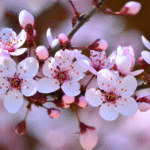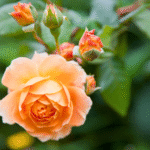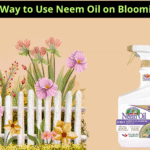Neem oil is popular among gardeners for its many benefits. It comes from the seeds of the neem tree and has been used for centuries. It can protect plants from harmful insects like aphids and spider mites.
However, some worry about using neem oil on flowering plants. This guide will help you learn how to safely use neem oil on your flowering plants, ensuring they stay healthy and beautiful.
What Is Neem Oil And How Does It Work?
Neem oil is extracted from neem tree seeds. It is a natural pesticide. Gardeners often use it to protect their plants. It is effective against common pests like:
- Aphids
- Spider mites
- Whiteflies
Using neem oil helps break pest life cycles without harsh chemicals. This means it is safer for the environment. Here are some benefits of using neem oil:
| Benefit | Description |
|---|---|
| Effective Pest Control | Targets a wide range of pests. |
| Non-Toxic | Safe for plants and beneficial insects when diluted. |
| Easy Application | Can be sprayed directly on plants. |
Gardeners appreciate neem oil because it disrupts feeding and reproduction in insects. This reduces the number of pests harming plants. Using neem oil is a smart choice for organic gardening.
How It Affects Insects And Fungi
Neem oil works in two ways. First, it disrupts the life cycle of pests. Second, it helps control fungal infections. Insects that come in contact with neem oil face serious challenges.
- Pest feeding stops.
- Reproduction is disrupted.
Fungal spores struggle to germinate on treated surfaces. This keeps plants healthy. It is important to use neem oil correctly. Always dilute it before spraying.
Remember to test a small area first. This ensures no damage to the plants. Regular applications may be needed for best results.

Is It Safe To Use On Flowering Plants?
Can you spray neem oil on flowering plants? The answer is yes, but caution is essential. Neem oil is an effective natural pesticide. It helps control pests and diseases. Yet, its use on flowering plants raises questions about safety.
When You Can Spray Neem Oil On Blooms
Spraying neem oil on flowering plants requires careful timing. The best times to apply it are during early morning or late evening. This reduces the risk to pollinators.
- Use during early morning or late evening.
- Avoid spraying open flowers directly.
- Apply only when no pollinators are active.
Timing is vital. Apply neem oil when flowers are not in full bloom. This helps to minimize contact with bees and other beneficial insects.
| Timing | Action | Reason |
|---|---|---|
| Early Morning | Spray neem oil | Cooler temperatures, less insect activity |
| Late Evening | Spray neem oil | Insects less active, safer for pollinators |
| Midday | Avoid spraying | High insect activity, risk to pollinators |
Always check your flowers before spraying. Wait until blooms start to close or are less attractive to pollinators. This way, you can protect both your plants and the vital insects that help them thrive.

Potential Risks To Pollinators
Using neem oil on flowering plants poses risks to pollinators. Bees and butterflies are essential for plant reproduction. Neem oil can affect bees if sprayed on open flowers. Residue may cling to pollen or nectar.
- Neem can affect bees if sprayed on open flowers.
- Residue may cling to pollen or nectar.
- Use caution during peak blooming periods.
To protect pollinators, always follow these guidelines:
- Only spray when no pollinators are active.
- Avoid spraying open flowers directly.
- Monitor for pollinator activity before applying.
Taking these steps helps ensure your garden remains a safe space for important pollinators. Healthy blooms and happy bees can coexist with a little planning. Your actions can make a big difference.

How To Apply Neem Oil Correctly
This section covers the best practices to ensure the safe and efficient use of neem oil on your plants.
Timing And Weather Considerations
Timing and weather play crucial roles in applying neem oil. Choosing the right time can enhance its effectiveness and protect your plants.
- Avoid use in direct sunlight or extreme heat. Applying neem oil in high temperatures can cause leaf burn.
- Apply during calm, dry weather. Wind can cause the spray to drift, leading to uneven application.
- Repeat every 7–14 days as needed. Regular applications help maintain pest control.
Timing your application correctly can lead to better pest control and healthier flowering plants.
Dilution Tips And Spray Methods
Correct dilution and application methods are essential for using neem oil. Too strong a mixture can harm plants. Follow these guidelines for proper dilution:
- Mix 1–2 tablespoons neem oil with 1 gallon of water. This ratio ensures a safe concentration for plants.
- Add a few drops of mild soap as an emulsifier. Soap helps the oil mix well with water.
- Shake the mixture well before spraying. This ensures an even distribution of neem oil.
When spraying, remember these tips:
- Spray evenly on leaves, avoiding flowers when possible. This protects delicate blooms from potential damage.
- Cover both the top and bottom of leaves.
- Avoid oversaturating any single area.
Using these dilution and application methods will help you protect your flowering plants effectively.

Common Mistakes To Avoid
Mistakes can lead to plant damage or ineffective pest control. Understanding these pitfalls can help you use neem oil effectively and safely on your flowers.
Spraying In Direct Sunlight
Spraying neem oil in direct sunlight is a common mistake. Doing this can cause leaf burn and plant stress. The sun’s heat can intensify the oil, leading to damage on the leaves. Always apply neem oil during the cooler parts of the day, such as early morning or late afternoon.
Here are some tips to remember:
- Avoid spraying between 10 AM and 4 PM.
- Choose cloudy days for application.
- Check the forecast for no rain after spraying.
By following these tips, you reduce the risk of leaf damage. A temperature change can also impact how well neem oil works. Cooler temperatures allow for better absorption.
Using Too Frequently Or In High Concentration
Another mistake is using neem oil too frequently or in high concentration. This can lead to leaf damage or stunted growth. Stick to recommended dilution and intervals for best results.
Follow these guidelines:
- Use a maximum of once every two weeks.
- Dilute neem oil according to the package instructions.
- Observe your plants for any signs of stress.
High concentrations may cause leaf burn. Always test a small area before full application. If you notice any adverse effects, reduce the concentration or frequency.






